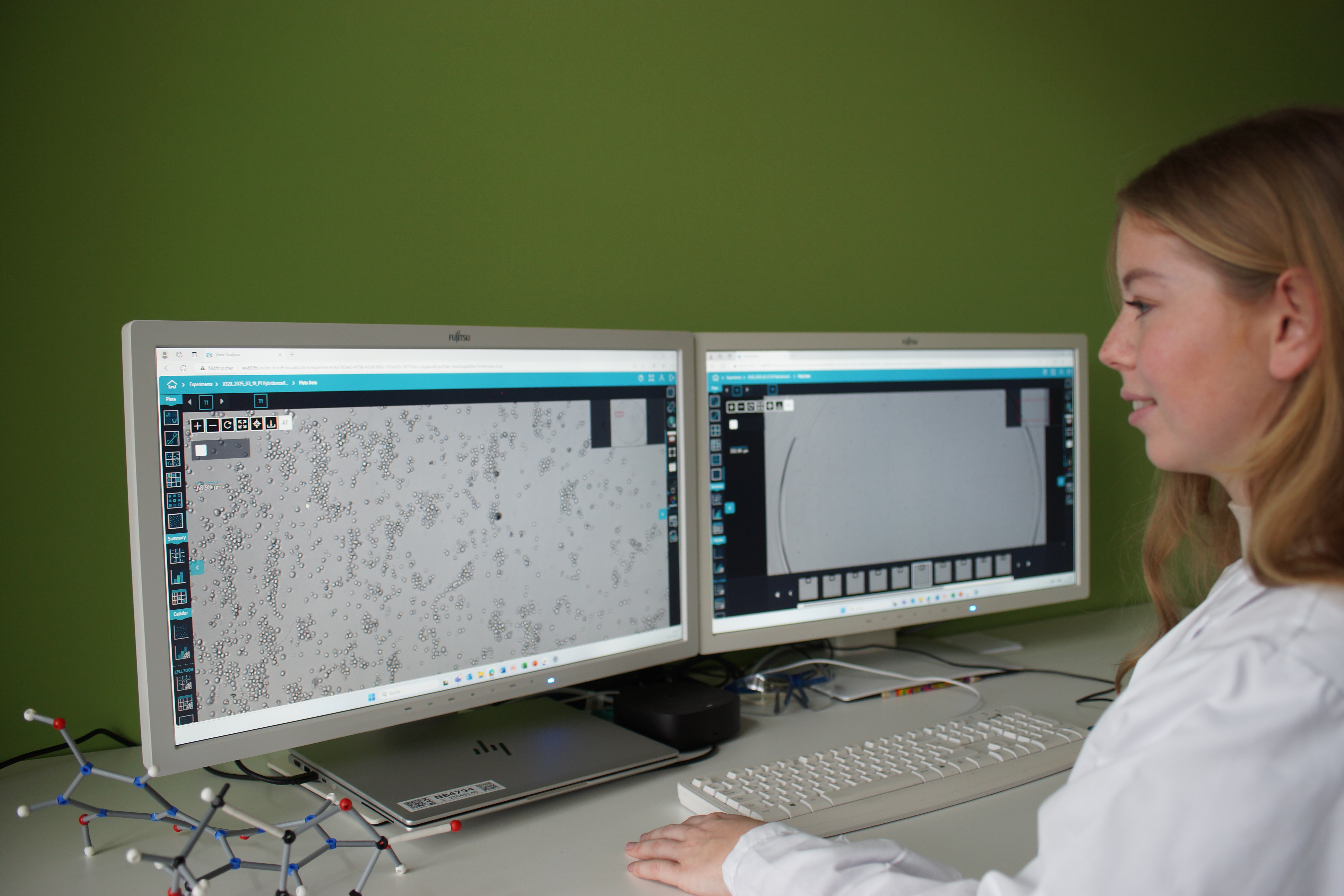
Hybridomas from cell fusion are carefully screened, to select the best antibody-producing clones.
Source: BAM
Project period
01/10/2024 - 30/09/2026
Project type
Collaborative research project
Project status
Ongoing
Description
In this project, haptens, antibodies, and reference materials for selected mycotoxins (fungal toxins) are being developed. These are required to produce new analysis kits for the SAFIA Technologies GmbH measurement platform in order to simplify the multiplexed detection of these toxins in food.
Location
Bundesanstalt für Materialforschung und -prüfung (BAM)
Richard-Willstätter-Straße 11
12489 Berlin
Cell culture in the clean room allows us, to bring the cells safely into production. Source: BAM
Source: BAM
Source: BAM
Authentic reference materials are obtained from naturally contaminated foodstuffs such as apples, ketchup, and rye flours by blending with uncontaminated fractions until reaching the required target content, based on EU Regulation 2023/915. They are then tested for homogeneity and stability and the exact mass concentration in the materials is determined by HPLC-MS/MS, using isotope-labelled internal standards.
Source: BAM
Project Co-ordinator:
SAFIA Technologies GmbH
Consortium:
- SAFIA Technologies GmbH
- Bundesanstalt für Materialforschung und -prüfung (BAM), Divisions 1.8 Environmental Analysis, 1.7 Organic Trace and Food Analysis, 1.5 Protein Analysis
Funding:
Pro FIT funding programme by Investitionsbank Berlin (IBB) with funds from the European Union from the EFRE Operational Programme (2021-2027) for the State of Berlin.
BAM is a co-operation partner in this funding scheme for the early-stage promotion of researching, innovative technology companies, thereby fulfilling its task of knowledge and technology transfer.
The detection of mycotoxins in raw materials and processed foods is a statutory task, strictly regulated by limits and standards, and market surveillance is usually carried out using hyphenated methods of chromatography and mass spectrometry. However, food processing companies want cost-effective on-site methods that allow checks to be carried out directly on receipt of goods and in the factory. The funded start-up has previously developed a technology that can be used to measure common mycotoxins quickly and simultaneously.
The portfolio of multiplex detectable toxins is now to be expanded to include several other important substances. These include patulin, which is extremely important for the fruit juice industry, alternaria toxins, which are found in tomatoes, for example, and alkaloids from ergots, which contaminate cereal products. In order to be able to include these substances in the analysis kits, high-affinity and selective antibodies are required, as well as de novo synthesised derivatives of the toxins, which are needed for antibody production and the production of some assay components.
In our work packages centred around antibody generation, we are driving the refinement of our innovative technologies to enable the rapid and efficient production of monoclonal antibodies in general. We use the ‘limiting dilution’ method for the selection of fused hybridoma cells as standard. In parallel, we use our patented (German patent DE102014114522A1) method for FACS-based selection of hybridomas and compare the accuracy and efficiency of the methods for obtaining monoclonal anti-hapten antibodies.
The funding allows us in the Division ‘Environmental Analysis’, Working Area Immunoanalytics/Molecular Biology (IAMB), headed by Dr Zoltán Konthur, to work on the extensive work packages with permanent and additional staff. We are being supported by Michael G. Weller, head of the ‘Protein Analysis’ Division of BAM.
Reference Materials are also being produced as part of the project, namely patulin in apple juice, alternariol, alternariol monomethyl ether and tenuazonic acid in tomato ketchup and ergot alkaloids in rye flour. This is being carried out by the ‘Organic Trace and Food Analysis’ Division of BAM under the direction of Dr Matthias Koch.
Partners
SAFIA Technologies GmbH
www.safia.tech
Bundesanstalt für Materialforschung und -prüfung (BAM):
Funding
The project is funded by the Pro FIT funding programme of Investitionsbank Berlin (IBB). The European Union provides funding from the EFRE Operational Programme (2021-2027) for the State of Berlin. Pro FIT serves to promote research, innovation and technology as an instrument of early-stage financing for technology companies.

Source: Europäische Union

Source: Investitionsbank Berlin

Source: Land Berlin


